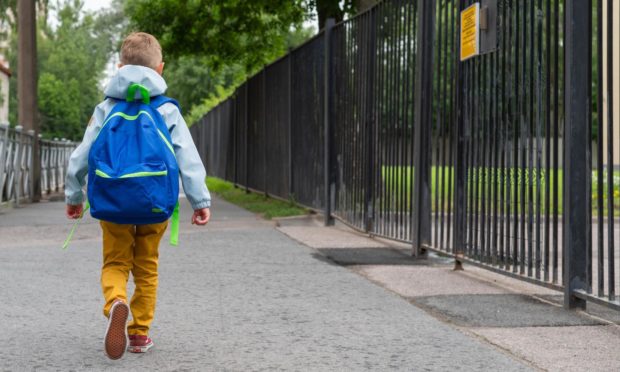Finally, the news that parents have been waiting for. From today, children return to school…except that they aren’t. It’s a complete mess.
While most primary children will be back in class every day, many secondary students will only go into school for a day or two, and some will go into school for just one class per week.
Regular readers of this column will know I am an adoptive mum.
One of my children, who should tick every box in terms of being vulnerable and a priority for education, will be in school for just one day a week.
He was already in school for one day a week because my partner is a key worker.
All that will have changed is the day he attends school and the hassle for us, since my partner now needs to alter his working hours at short notice.
As a family we are suffering very badly due to the pressure this has placed on our home life.
Teachers say the return of children in years S1-3 is actually counterproductive since they have to continue with online learning as well as teaching face-to-face.
The nub of the problem seems to be more restrictive two-metre distancing rules that have “reduced capacity”.
But keeping children at home because they can’t fit into a classroom misses the point. We are prioritising walls over people.
There are plenty of places where we can bring children together and still observe social distancing, not least our abundant open spaces.
Wrap them up and head out into the park and the countryside. And if the weather is really bad, well, there are a lot of buildings schools can use.
The local fisheries board owns an empty polytunnel four times the size of any classroom just down the path from my nearest school.
Even in the city there are plenty of disused shop spaces – now more than ever. It’s time to requisition these unused spaces and put out a plea for property owners to volunteer their buildings for a short time.
We are in the final campaign of a war against this virus, let’s use all the resources we have at our disposal to secure victory.
No, we won’t be able to teach computing or chemistry in a polytunnel but that’s not the point either. There’s only two weeks of term left.
What our children desperately need is an end to the chronic loneliness which has already dominated so much of their lives.
Don’t worry about sticking to timetables or teaching the curriculum – we know that exam grades will be awarded from work already done and tests on subjects already taught.
Chuck out the preconceptions of what school should look like and focus on outcomes. So many children have suffered loneliness and anxiety or, worse still, have been locked up with neglectful or abusive parents.
We need to get them out of the house and into a social environment where they have the support of teachers and friends.
They need to relearn vital social skills, burn off some energy and be stimulated by new environments. Forget the need for classrooms and the curriculum and the problems melt away.
One teacher, one class, all day, anywhere with suitable space. It’s basically a two-week school trip without the coach journey. Would that be so bad?
And before you hit me with safety regulations and compliance, there’s nothing as harmful for our children’s health as this continued isolation.
I suspect they’d be just fine in a barn or empty commercial building for a couple of weeks.
Then we can all recharge over Easter and look forward to a return to normal school after Easter, as restrictions are eased and the vaccine programme continues apace. Coronavirus has already turned life on its head.
Let’s not let the “normal” way of doing things stop us from thinking creatively in order to safely speed up our exit from this nightmare.
Eleanor Bradford is a former BBC Scotland health correspondent who now works in communications in the education sector
